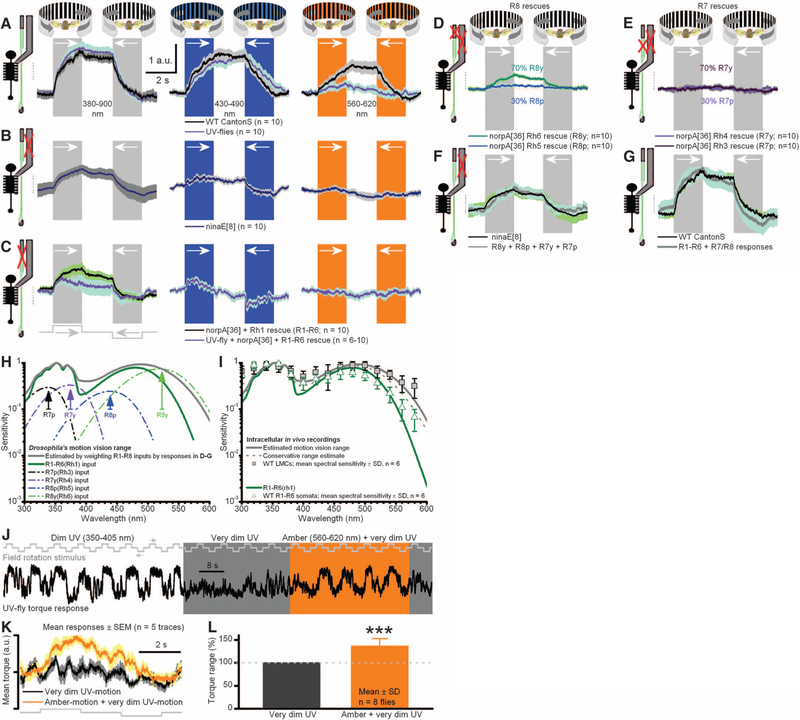Fig. 4.
Signals from R1–R6 and R7/R8 sum to generate optomotor responses. Responses (yaw torque) of tethered flying Drosophila to different color-field rotations (black-white, black-blue, and black-amber) to left and right. (A) Both UV flies (R1–R6s expressing Rh3-opsin) and WT respond to broad spectral range of motions. a.u., arbitrary unit. (B) Mutant ninaE8-flies, having light-insensitive R1–R6 photoreceptors (Fig. 3G; motion pathway) but normal R7/R8 photo-receptors, react to an equally broad spectral range of motions as in (A), but with weaker responses. (C) norpA36 flies, having R1–R6 photoreceptors rescued with Rh1 or Rh3 opsins, react to broad spectral range of motions but with weaker and faster responses than in (A). (D) Rescuing light sensitivity only in R8y or R8p photo-receptors enables visual motion perception. (E) Rescuing light sensitivity only in R7y or R7p photoreceptors enables weaker motion perception (fig. S11B). (F) Responses of norpA36 flies with rescued light sensitivity in R7 and R8 photoreceptors equal the mean responses of ninaE8 flies. (G) Responses of norpA36 flies with rescued R1–R6 photoreceptors and ninaE8 flies (with normal R7/R8s) sum up the mean responses of WT flies. In (A) to (G), mean T SEM is shown in same scale. (H) Motion-vision range estimated by weighting R1–R8 inputs with their relative optomotor response strengths: (D) to (G). (I) Range coincides with LMCs’ spectral sensitivity. (J) UV motion is dimmed until a fly’s optomotor responses nearly cease. Adding amber light strengthens responses. (K) Corresponding averages. (L) R8y input improves motion discrimination by ~36% (P = 0.0004; t test for mean > 1).

